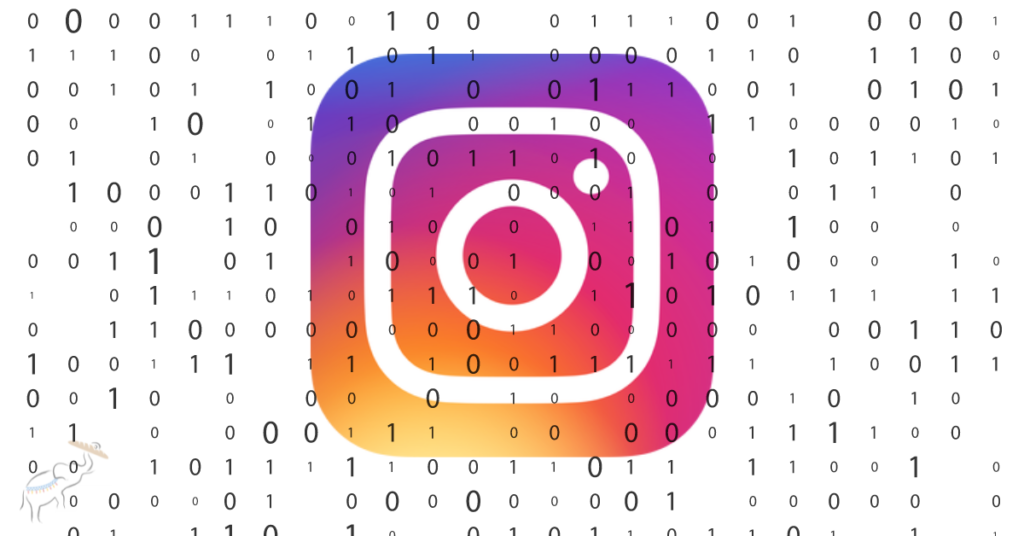Last Updated on January 29, 2025 by Bread and Circuses Team
To dispatch with the obvious: your best path to visibility on your social platform of choice is to create great, original content. Like a minimum height requirement for a roller coaster–your content needs to be just plain good to ride the platform ride. There are no shortcuts around the creativity needed, both for visibility and for the sanctity of your brand.
That said–(and of course you knew there would be a “that said”) social platforms have specific ideas about the content that they would like to see rise– for the benefit of their users, platform engagement and their own revenue models.
To shape platform engagement, they create, test and tweak algorithms constantly to give greater weight to certain content formats and content engagement behaviours. It is helpful to understand these algorithms because it informs the content formats you decide to create as well as their execution.
As an example: it is reasonable to expect that short-form video as a format is favoured across many platforms at the moment. If you choose a content strategy that focuses on posting articles on Facebook vs short-form video you will likely hear crickets–you need to be a good fisherman, sure, but you also need to fish where the fish are.
To help guide the content and platform decisions for your company, we’ve put together an overview of how some popular social media platform algorithms work. The information on each platform varies and some of this information is tightly guarded. We’ll include what we know and add more as it is available.
How The Instagram Algorithm Works

Instagram chief Adam Mosseri is fairly transparent about the inner workings of the Instagram algorithm(s) and recently posted a video explaining how they work. He was quick to point out that there is no single algorithm at play, rather, there are several–and their overall goal is to surface content that matches users’ interests
The Instagram Stories Algorithm
Instagram analyzes all of the Stories published over the last 24 hours by those you follow and uses “proxies” or informed guesses on which stories you will click on based on key signals, such as:
- How often you view Stories from an author (account/creator).
- How frequently you interact with Stories from an author.
- How close you are to the author based on how many times you’ve messaged them.
The Instagram Feed Algorithm
The specific goal of the Instagram feed algorithm is to catch users up with the best content posted since they last used the app.
The IG feed includes a mix of content from those you follow, and Instagram accounts you might be interested in based on a series of predictions about:
- How likely you are to comment, like, or share the post
- How likely you are to tap on the profile.
- How much time you are likely to spend on the post.
These predictions are based on the following top signals:
- Your history of interactions, what you’ve interacted with in the past.
- Information about the post, how popular it is and if there is a lot of engagement/activity from others.
- Information about the author.
- Information about how you’ve interacted with that author in the past.
The Instagram Reels Algorithm
The goal of the Reels algorithm is to serve users content that entertains them. Instagram serves Reels primarily from accounts you do not follow. It guesses which Reels users will most likely watch until the end, share with friends, or visit the audio page of– in order to determine what content it serves.
To do this it looks at these signals:
- The Reels you’ve watched and interacted with in the past
- Information about the Reel, information about the author of the Reel, and how often you’ve interacted with the author.
- The Reels liked by other users similar to you.
How the Facebook Algorithm Works

Facebook focuses on something it calls “Personalized Ranking”, which simply means it uses a set of rules to rank content platform-wide to determine what individual users see and in what order.
Like Instagram, Facebook has several algorithms that work to achieve this goal. Algorithms are evaluating every ad, post, story or reel and matching it against user characteristics and activities so that every time a user refreshes their feed they are getting a personalized experience.
There are three main ranking signals:
- Who posted the content: you are more likely to see content from sources you engage with, including businesses and friends.
- Content formats you engage with: you will see more of the types of formats you consume/ engage with, If you mostly engage with videos, you’ll see more videos
- Post Interactions: the algorithm will prioritize posts with the most engagement (likes, comments, shares), particularly if that engagement comes from other people you interact with.
The Facebook News Feed Algorithm
The Facebook News Feed mainly features content from brands, people and groups that users are already connected with. The order of the content showcased is determined by something called a Content Relevance Score, which is a value given to content that “could” appear in your feed.
Facebook calls this content Inventory. Inventory is all of the content that “could” appear in your News Feed, this includes all posts by the people, publishers and companies you follow or groups you are a member of as well as ads.
Facebook uses Signals (the ranking signals mentioned above) to help form Predictions. Predictions are Facebook’s best guess about the content you are most likely to engage with based on the ranking signals they deem important. With this information, the Facebook algorithm assigns a Content Relevance Score and determines the order of feed content you see.
The Facebook Reels Algorithm
Facebook reels are a relatively new format for Facebook and so information on the algorithm is limited. It has been a focus growth area for Facebook as creators have been incentivized to drive reels views with bonuses.
With all short-form video, the packaging of the video, particularly at the video start is crucial. Through imagery and written word, hooking users quickly is vital. As Facebook also needs time to display ads, it stands to reason that retaining users throughout the video is valued.
Facebook themselves have provided other very general guidelines for success using Reels:
- Post vertical video
- Experiment with different approaches
- Be entertaining and engaging
- Start a trend
- Use built-in tools like text, filters, or other effects
- Add music
- Use good lighting and camerawork to create video that’s visually pleasing
- And here’s what to avoid:
What not to do:
- Blurry or low-resolution video
- Post videos with watermarks from other apps (i.e., TikTok)
- Post videos with borders around them
- Post horizontal video
How The Linkedin Algorithm Works

Linkedin is an extremely effective social network for B2B connections, marketing and business development. With drops in organic search traffic reported by many websites, the constant change to the Google SERP’s and the impending integration of AI in search, many are looking to Linkedin to generate valuable leads as organic search becomes more volatile.
Linkedin: A Tale of Two Networks
While much can be made of the unique types of content that tend to resonate on Linkedin (carousels being one of the most effective) a lot of success comes down to specific engagement types by two separate networks.
Richard van der Blom, an expert on Linkedin and Linkedinfluencer, has broken down how it works. The Linkedin Algorithm assesses information about a given post’s original author as well as the person engaging. Both parties get distribution benefits from different types of interaction and specific types of interactions determine how much growth the post gets or how much visibility the person engaging gets.
This is the power-ranking of engagements, in order of importance, by network type:
Original author:
- Comment with response from other commenters
- Comment with author response
- Comment with engagement
- Instant Repost
- Repost with thoughts
- See More
- Like
Person Engaging:
- Comment with response from other commenters
- Comment with author response
- Comment without engagement
- Repost with thoughts
- Instant repost
- Like
Clearly, Linkedin prioritizes comments as the most valuable form of engagement and–more specifically– comments that create further conversations. Apart from posting compelling content, making sure to add compelling comments on posts and replying to comments is the most effective way to get distribution.
Aside from comments being king, van der Blom also noted that lots of instant reposts accelerate reach substantially for original authors.
How The Tiktok Algorithm Works

TikTok is the current darling (or demon) in the world of social media platforms, Its highly addictive trend-driven short-form video format, selected algorithmically to be served on its “For You” section, has led to its skyrocketing popularity and rabid copy-catting by other social platforms, to the point where short-form video is the de-facto content format across most social media.
TikTok defines it’s “For You” section as “A stream of videos curated to your interests making it easy to find content and creators you love…powered by a recommendations system that delivers content to each user that is likely to be of interest to that particular user…”
TikTok uses three ranking signals to inform the “For You” algorithm: user interactions, video information and device and account settings.
User Interactions
Like Facebook and Instagram, TikTok gleans important data from user interactions on the platform. In the case of the “For You” algorithm the following factors are considered:
- Which accounts you follow
- Comments you’ve posted
- Creators or sounds you’ve chosen to hide
- Videos you’ve marked as “Not Interested”
- Videos you’ve reported as inappropriate
- Longer videos you watch all the way to the end (completion rate)
- Content you create on your own account
- Interests you’ve expressed by interacting with organic content and ads
- Videos you’ve liked or shared on the app
- Videos you’ve added to your favorites
These user interactions carry different weight in the algorithm (alas–that information we don’t have)
Video Information
Tiktok doesn’t just evaluate how you interact with others on the app, but the nature of the content you seek through Search or Discover.
Some of the details it considers around video information:
- The nature of accounts/content you seek
- Captions
- Trending topics
- Sounds
- Hashtags
- Effects
Device and Account Settings
This is a less important signal category, as these settings are generally the one-time settings you’ve used for your TikTok account and are not part of your active engagement. Nonetheless, to serve relevant content to users (particularly content that is relevant to your geo-location and language), TikTok uses some of the following settings as signals:
- Type of mobile device
- Categories of interest you selected as a new user
- Country settings
- Language preferences
The Good news for TikTok Beginners…
According to TikTok, recommendations are not based on follower count or history of high-performing videos, so new creators are not at a disadvantage. Existing accounts may still draw sizable viewership as users may be seeking out those videos, but the “For You” section does not have a bias towards bigger accounts–TikTok has an interest in serving up a diversity of great content. The key is to focus on making your content great for your target audience.
How to Ride The Algorithm Rollercoaster
If you are a content creator on social media, you already know that the road to success is a bumpy one. Algorithms are constantly tweaked, and product and business objectives of social platforms are ever-shifting. What works today might not work tomorrow, and surprise: you could find your account throttled or demonetized.
In spite of some efforts at transparency by social platforms, the subtleties of how each of the algorithms work are closely guarded. The best way to understand them in-depth is through engagement on the platforms–following successful creators on each platform to understand their approaches and doing your own testing.
With an open mind, a systematic approach and patience, you can learn a lot of uncommon knowledge about social algorithms–and get your content in front of the audience it deserves.

